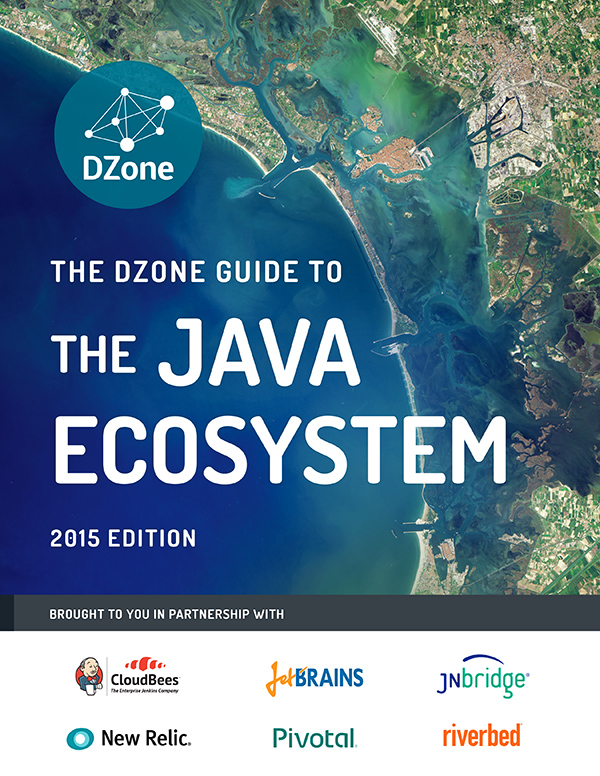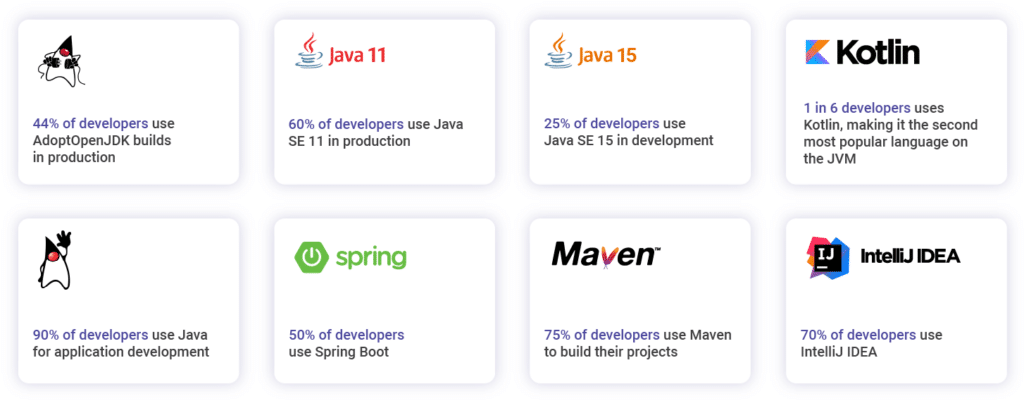The Evolving Landscape of Java and Spring: What Developers Need to Know
The Java ecosystem is in the midst of a renaissance, characterized by rapid innovation and a renewed focus on performance, developer productivity, and modern application architectures. For developers, staying current isn’t just a best practice; it’s a necessity for building resilient, scalable, and efficient software. At the heart of this evolution is the Spring Framework, which continues to adapt and lead the way. The latest Spring news isn’t just about incremental updates; it’s about paradigm shifts that address the demands of cloud-native computing, artificial intelligence, and high-concurrency workloads. From the foundational changes in Spring Framework 6 and Spring Boot 3 to the exciting frontiers of Spring AI, the landscape is buzzing with activity.
This article provides a comprehensive overview of the most significant developments impacting Java and Spring developers today. We’ll explore the implications of the mandatory Java 17 baseline, the massive shift to Jakarta EE, and the game-changing performance enhancements brought by Project Loom’s virtual threads. We will also dive into practical code examples, showcasing how to leverage these new features in your daily work. This isn’t just Java news; it’s a roadmap for the modern Java developer, covering everything from core framework updates to the latest in the broader Java ecosystem news, including updates from OpenJDK, build tools like Maven and Gradle, and testing frameworks like JUnit.
Section 1: The Generational Leap with Spring Framework 6 and Spring Boot 3
The releases of Spring Framework 6 and Spring Boot 3 marked a significant turning point. They weren’t just new versions; they represented a re-platforming of the entire ecosystem onto a more modern foundation. This move has profound implications for application development, deployment, and performance.
Embracing a Modern Java Baseline
Perhaps the most significant change is the baseline requirement of Java 17. This decision allows the Spring Framework to leverage modern language features and JVM improvements directly. For developers, this means access to records, sealed classes, pattern matching for `instanceof`, and text blocks, leading to more concise and expressive code. This move aligns with the broader Java SE news, where recent LTS releases like Java 17 and Java 21 news have introduced a wealth of enhancements. The adoption of a modern baseline is a clear signal from the Spring team that the future of Java is now, and developers are encouraged to move on from legacy versions like Java 8 news or Java 11 news.
The Critical Migration to Jakarta EE
Following the transition of Java EE to the Eclipse Foundation, the package namespace for all its APIs changed from `javax.*` to `jakarta.*`. Spring Framework 6 and Spring Boot 3 are built on Jakarta EE 9+, making this migration mandatory for all Spring applications. This affects core enterprise APIs, including Servlets, JPA (now Jakarta Persistence), and Bean Validation. While this is primarily a “find and replace” operation, it’s a critical one. For example, when working with JPA entities, your imports must change.
Here’s a practical example of the change in a typical JPA entity, which is relevant for anyone following Hibernate news, the most popular Jakarta Persistence provider.
// Before: Using javax.persistence with Spring Boot 2.x
import javax.persistence.Entity;
import javax.persistence.GeneratedValue;
import javax.persistence.Id;
@Entity
public class OldProduct {
@Id
@GeneratedValue
private Long id;
private String name;
// getters and setters
}
// After: Using jakarta.persistence with Spring Boot 3.x
import jakarta.persistence.Entity;
import jakarta.persistence.GeneratedValue;
import jakarta.persistence.Id;
@Entity
public class NewProduct {
@Id
@GeneratedValue
private Long id;
private String name;
// getters and setters
}This change in the Jakarta EE news is fundamental. All your persistence, validation, and web-layer dependencies need to be updated to their Jakarta-compatible versions. Fortunately, build tools like Maven and Gradle, along with Spring Boot’s starters, handle most of this dependency management automatically.
Ahead-of-Time (AOT) Compilation and GraalVM Native Images
A major theme in recent JVM news is the push for faster startup times and lower memory consumption, especially for serverless and microservices architectures. Spring now has first-class support for GraalVM Native Image compilation. This is achieved through a sophisticated Ahead-of-Time (AOT) processing phase that analyzes the application at build time. The AOT engine generates the necessary configuration and code to create a self-contained, native executable that starts in milliseconds and uses a fraction of the memory of a traditional JVM application. This is a game-changer for Java performance news and positions Java as a top-tier language for cloud-native development.
Section 2: Unleashing Concurrency with Virtual Threads (Project Loom)

One of the most anticipated features from the OpenJDK news pipeline has been Project Loom, which delivered virtual threads, officially released as part of Java 21. Virtual threads are a lightweight concurrency model that dramatically simplifies writing, maintaining, and observing high-throughput concurrent applications. The latest Spring Boot news reveals that enabling them is astonishingly simple.
What are Virtual Threads?
Traditional Java threads (platform threads) are a thin wrapper around operating system threads. They are a scarce and heavy resource. Creating thousands of them can quickly exhaust system memory and lead to performance degradation from context switching. Virtual threads, however, are managed by the Java runtime, not the OS. Millions of virtual threads can be mapped to a small pool of OS threads, allowing for a “thread-per-request” model without the associated overhead. This is revolutionary for I/O-bound applications, such as web services that spend most of their time waiting for database or network responses. This is the most impactful Java concurrency news in over a decade.
Enabling Virtual Threads in Spring Boot
With Spring Boot 3.2 and later, enabling virtual threads for your web requests is as simple as adding a single line to your `application.properties` file. This configures the embedded Tomcat server to use a virtual thread for each incoming request.
# application.properties
# This simple property enables virtual threads for all incoming web requests.
spring.threads.virtual.enabled=trueWith this one change, your Spring MVC or WebFlux application can handle significantly more concurrent requests with fewer hardware resources. The latest Java virtual threads news indicates that this feature is stable and ready for production workloads, offering a massive performance boost for the right kind of application.
Best Practices and Considerations
While virtual threads are powerful, they are not a silver bullet. They excel at I/O-bound tasks. For CPU-bound tasks, traditional platform threads are still the better choice. A key pitfall to avoid is “pinning,” where a virtual thread becomes stuck to its carrier OS thread, typically by executing a `synchronized` block or native code. Modern Java libraries and the JDK itself have been updated to minimize pinning, but it’s a factor developers should be aware of. The principle of structured concurrency, also part of Project Loom, provides a more robust way to manage concurrent tasks and is a key topic in current Java wisdom tips news.
Section 3: The AI Revolution Arrives with Spring AI
The most exciting development in the recent Spring news cycle is undoubtedly the introduction of the Spring AI project. As artificial intelligence, particularly large language models (LLMs), becomes more integrated into software, developers need robust and simple tools to leverage them. Spring AI aims to be the go-to framework for building AI-powered applications in the Java ecosystem, abstracting away the complexities of different AI providers.
Simplifying AI Integration in Java
Spring AI provides a unified API for interacting with a wide range of AI models, from providers like OpenAI, Azure, and Google to open-source models that can be run locally via Ollama. This is a significant development, as it brings the familiar Spring programming model of dependency injection and abstraction to the world of AI. It competes with and complements other libraries in this space, and the latest LangChain4j news shows a healthy and growing ecosystem for AI in Java. The goal of Spring AI is to make building a chatbot, a summarization service, or a Retrieval-Augmented Generation (RAG) system as easy as creating a REST controller.
Practical Example: Building a Simple AI-Powered Service
Let’s create a simple Spring service that takes a topic and asks an AI model to provide a short joke about it. This example will use the `ChatClient`, the central interface in Spring AI.

First, you would add the necessary dependencies to your Maven `pom.xml` (similar dependencies exist for Gradle users, aligning with the latest Maven news and Gradle news).
<dependencies>
<!-- Spring Boot Starter -->
<dependency>
<groupId>org.springframework.boot</groupId>
<artifactId>spring-boot-starter-web</artifactId>
</dependency>
<!-- Spring AI Starter for OpenAI -->
<dependency>
<groupId>org.springframework.ai</groupId>
<artifactId>spring-ai-openai-spring-boot-starter</artifactId>
<version>0.8.0</version> <!-- Check for the latest version -->
</dependency>
</dependencies>
<repositories>
<repository>
<id>spring-milestones</id>
<name>Spring Milestones</name>
<url>https://repo.spring.io/milestone</url>
</repository>
</repositories>Next, you configure your API key in `application.properties`:
spring.ai.openai.api-key=YOUR_API_KEY_HERE
Finally, you can create a service to interact with the model:
import org.springframework.ai.chat.ChatClient;
import org.springframework.stereotype.Service;
@Service
public class JokeService {
private final ChatClient chatClient;
public JokeService(ChatClient chatClient) {
this.chatClient = chatClient;
}
public String getJoke(String topic) {
String prompt = "Tell me a short, clean joke about " + topic + ".";
return chatClient.call(prompt);
}
}This code is clean, testable, and completely decoupled from the specific AI provider. You could switch to a different model by changing your dependency and configuration, with no changes to the service code. This is a testament to Spring’s design philosophy and is a major piece of the current Spring AI news.
Section 4: Best Practices for the Modern Java Developer
Embracing these new technologies requires a modern approach to development, testing, and security. The ecosystem provides powerful tools to help.
Enhanced Observability with Micrometer

Spring Boot 3 introduced a unified observability abstraction built on Micrometer. It seamlessly integrates metrics, and now, with Micrometer Tracing, distributed tracing as well. This allows you to gain deep insights into your application’s behavior, track requests across multiple microservices, and diagnose performance bottlenecks without proprietary agents. This focus on observability is crucial for maintaining complex systems and is a key part of the Java performance news.
Robust Testing with Testcontainers
Modern applications rely on external dependencies like databases, message queues, and caches. The latest JUnit news highlights the deep integration of frameworks like Testcontainers, which allow you to spin up these dependencies in Docker containers as part of your automated tests. Spring Boot has excellent support for Testcontainers, making it easy to write true-to-production integration tests. This, combined with established tools like Mockito for unit tests (as covered in Mockito news), provides a comprehensive testing strategy.
Proactive Security
With the complexity of modern applications, Java security news is more important than ever. Use tools like the OWASP Dependency-Check plugin for Maven or Gradle to scan for known vulnerabilities in your dependencies. Spring Security continues to evolve, providing robust protection against common threats. Always keep your dependencies, including the JVM itself (whether from Oracle Java news or OpenJDK providers like Adoptium or Amazon Corretto), up to date to receive the latest security patches.
Conclusion: A Vibrant and Thriving Future
The narrative of Java being slow or outdated is officially a relic of the past. The current wave of innovation, driven by projects like Loom, Panama, and Valhalla, and championed by frameworks like Spring, has positioned the ecosystem for a new era of growth. The latest Spring news shows a clear focus on developer experience, performance, and embracing modern trends like AI. By leveraging virtual threads for unparalleled concurrency, GraalVM for cloud-native performance, and Spring AI for intelligent applications, developers have a powerful and comprehensive toolkit at their disposal.
For developers, the path forward is clear: embrace the modern Java LTS versions, migrate your applications to Spring Boot 3, and begin experimenting with these transformative new features. The investment in learning and adopting these technologies will pay significant dividends, enabling you to build the next generation of high-performance, intelligent, and scalable applications on the JVM.

